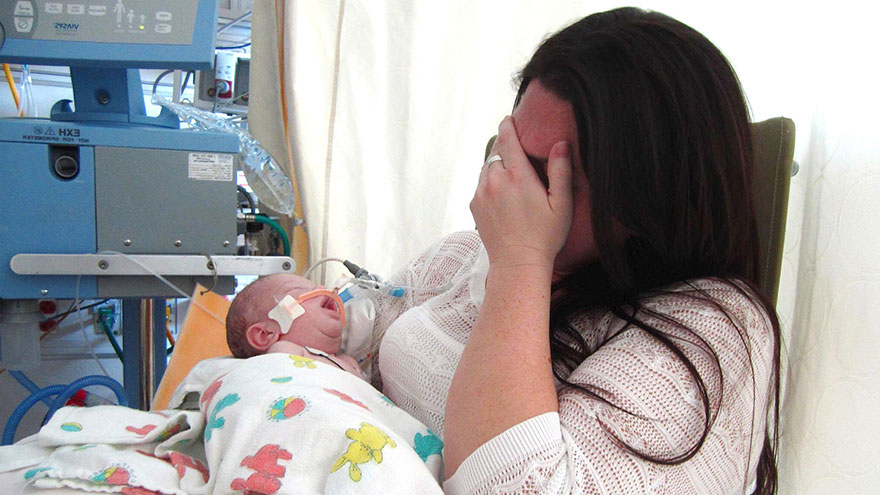Signs of Baby Distress While Pregnant
It is difficult to know when a baby is in distress during pregnancy. Without being able to monitor the heartbeat, the mother must rely on her own feelings of wellness, cramping or fetal movement. Recording the heartbeat in late pregnancy or labor is the best way to become aware of distress.

Cramping and Spotting
Usually occurring early in the pregnancy, the mother may feel excessive cramping pains and may be spotting from the vagina. These are signs of a miscarriage and the mother must seek medical attention immediately.
Bleeding in Late Pregnancy
Bright red, heavy and painless bleeding from the vagina in the last couple months of pregnancy may be a sign that the placenta has attached on or near the cervix instead of on the uterine walls. The placenta will detach and cause bleeding and can be life-threatening for the baby.
Fever Over 100.5 Fahrenheit
A fever over 100.5 degrees Fahrenheit in the last few weeks of pregnancy may be a sign of uterine infection and could trigger an early labor.
Less Kicks
If the mother does not feel at least 10 movements from breakfast to mid-afternoon, the baby may be distressed and the mother needs to see her doctor. The doctor will perform certain tests to further monitor the movements and heart rate.
Odd Heart Rate During Labor
The baby’s heart rate naturally decreases during a contraction, but a heart rate that stays low for an extended period of time or lowers long after a contraction may be a sign that the baby is in distress and needs to be delivered as soon as possible.
You Might Also Like :: Stillbirth Symptoms

